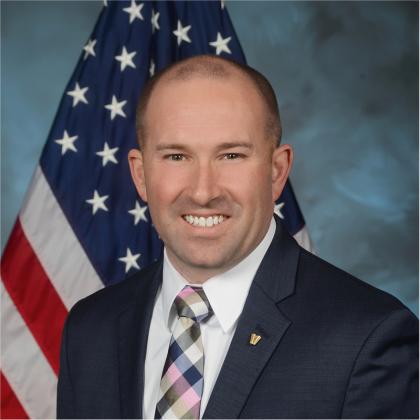DISA's Shift: Less Data in the Cloud and Embracing AI in Government Tech
The Defense Information Systems Agency, DISA, is bringing data back from the cloud and betting on artificial intelligence, or AI.
“That pendulum has swung hard. Everything was going to the cloud a few years ago. It's sort of coming back,” said Stephen Wallace, DISA’s chief technology officer and director of the agency’s Emerging Technology Directorate.
“The reality is we're going to live in a world where the data sits in many different places, whether it's in a commercial cloud, whether it's an on-prem computer, what have you,” Wallace told the audience at DISA’s Forecast to Industry event on Monday in Towson, Maryland.
This annual event is where DISA leaders address industry executives and provide in-depth information on acquisition and procurement plans.
The agency awarded $6 billion worth of contracts last fiscal year, and small businesses took $1.9 billion of those, according to Lt. Gen. Robert Skinner, USAF, agency director. Gen. Skinner laid out guidelines for the immediate challenges the agency faces. “We have a lot of legacy capabilities. How can we modernize while maintaining the current capability.” He also explained that affordability was another key factor, as the budget would remain constant or diminish.
Among the emerging capabilities the agency seeks are:
- Supply chain validation and scaling, to better understand which raw materials go into the systems the government operates.
- Browse down, “the ability to actively browse from one classification domain into another, either horizontally or vertically,” as defined by Wallace.
- AI trust, risk and security management, to continue the zero-trust journey with integrated cybersecurity tools.
- Homomorphic encryption, “that idea of interacting with encrypted data sets without ever actually decrypting them,” Wallace explained.
- Hybrid cloud, as a capability moving data back to on-premises machines.
- AI ops, a concierge AI that will allow warfighters to receive assistance through a chat.
The agency invited new companies to come up with solutions that could be integrated into larger contracts and, possibly, as part of the offering of a primer contractor.
Nevertheless, there were warnings for those who don't believe that partnering is a potentially rocky venture.
“Federal contracting is hard,” said Carlen Capenos, Office of Small Business Programs director.

The reality is we're going to live in a world where the data sits in many different places.
As smaller businesses enter partnerships with large ones to access these contracts, Capenos sees collaboration agreements as a key tool.
She criticized the practice of some large businesses displacing smaller partners after a contract is awarded. To have recourse and lay the foundations to avoid future conflicts, Capenos suggested, “Make sure you get your agreement in writing; make sure there's two signatures on it.”
Additionally, the agency suggested deep involvement and conversations with the partners and a thorough understanding of what is expected from each party.
“The more into a [work] proposal, the better it is,” said Jason Martin, DISA’s Digital Capabilities and Security Center director and acquisition executive.
Martin explained that the agency could mediate when there are clear terms laid out among the parties, starting from the proposal to obtain the contract and following the process into final delivery.





Comments